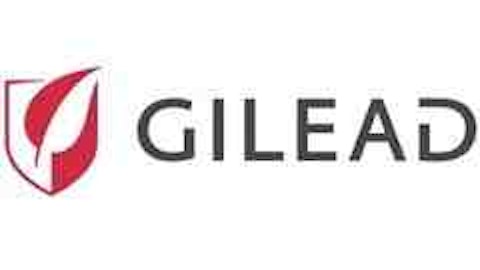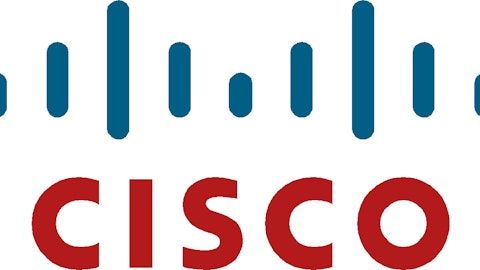When building a drug portfolio, most investors stick to pharmaceutical firms. Since these are generally the largest, most profitable options, it’s easy to see why. However, not including a biotechnology company in the mix is a notable weakness in such an approach. While the biotech industry is filled with small, unprofitable companies, one stands out as a giant and it has a place in every drug portfolio.
Pharmaceutical vs Biotechnology
Drugs are an increasingly important aspect of everyday life. With the aging of the Baby Boomers, drug use is set to increase as a large population of future patients moves into their highest medical use years. Add to this the fact that using drugs to treat an illness, despite the often high cost of the drugs involved, can be cheaper than other options, and the trend toward increased drug use seems certain to continue for years to come.

There are basically two approaches to finding new drugs. One approach, used by pharmaceutical companies, is to examine chemicals that can be beneficial. The other, used by biotechnology companies, examines naturally occurring biological substances as the basis of the research effort. While both are very similar in nature, requiring large up-front research efforts, clinical testing, and Food and Drug Administration approval, the actual processes involved are vastly different.
The pharmaceutical industry is much more mature than the biotech industry, playing host to some of the largest and most profitable companies around. The biotech industry, meanwhile, is often seen as the Wild West, where companies come and go, often at great cost to investors. However, biotechnology is going to be increasingly important in the future and not having some exposure to the industry would be a major mistake if you are building a drug portfolio.
A Solid Portfolio
Finding a good pharmaceutical company doesn’t take a lot of time. Most of the major players are household names and two, Merck & Co., Inc. (NYSE:MRK) and Pfizer Inc. (NYSE:PFE), are members of the Dow 30. A third, more diversified drug company, Johnson & Johnson (NYSE:JNJ), is also a Dow member, though its business lineup includes consumer products and medical devices in addition to drugs.
Both Merck & Co., Inc. (NYSE:MRK) and Pfizer Inc. (NYSE:PFE) would make great additions to a drug portfolio. Each are large participants with notable industry positions. In fact, Pfizer is the largest drug company in the world. Some of the shared strengths of these giants include massive research teams, effective sales forces, and the ability to expand via both internal efforts and mergers and acquisitions. As discovering new drugs becomes increasingly difficult, that last item has become increasingly important.
Johnson & Johnson, meanwhile, is something of a broader industry play, because of its medical device and consumer products divisions. In fact, it is a relatively late entrant into the drug space. That said, the company has a long history of shifting its business over time with acquisitions. The company’s long-term success is very much tied to the successful execution of such transactions, large and small.
All three of these drug companies face similar threats today. The biggest is the fact that some of their most profitable drugs have already lost patent protection, or will find those protections lost in the near future. While each has a pipeline of new drug candidates, the massive profits of successful drugs can be very hard to replace. Still, any of the three would be a good addition to a drug focused portfolio or to provide drug exposure to a more diversified portfolio.
The Wild West
The cutting edge of the drug industry, however, tends to be biotechnology. So pairing a core pharmaceutical or two with a good biotech firm would make a much better and more representative portfolio. There is, however, only one biotech that is large enough and financially strong enough to fit that bill, Amgen, Inc. (NASDAQ:AMGN).
The company just reported 2012 earnings and, overall, it had a decent year. Particularly impressive was the company’s decision to continue returning value to shareholders via a dividend increase and share buybacks. In an industry known for not paying dividends and issuing shares to fund research, these shareholder friendly acts are the attributes of a leader that has matured beyond the hit or miss stage of so many of its competitors.
A Little About Amgen
Amgen has an impressive list of active drugs, particularly for a biotech company. With ten notable drugs, it has plenty of firepower to keep funding its research efforts. Although three of the company’s drugs, Neulasta, NEUPOGEN, and Enbrel, account for about two thirds of the company’s sales, such dependence isn’t uncommon in the pharmaceutical space either. All three of the drugs are billion dollar products. Aranesp and EPOGEN, two other key drugs for the firm, are also billion dollar drugs. That’s an impressive list.
Of the five major drugs, only Enbrel appears to be growing, with 14% sales growth in 2012 on the strength of price increases and, more importantly, increasing demand. Enbrel treats inflammation, with future growth underpinned by the potential for the drug to be used in additional patient populations. For example, when first released, the drug was approved for rheumatoid arthritis. Today, its indications include chronic moderate to severe plaque psoriasis, active psoriatic arthritis, and active ankylosing spondylitis. Since inflammation is believed to be an important aspect of a number of different ailments, Enbrel’s growth probably isn’t over yet.
The other four drugs, however, don’t appear to possess as inspiring long-term potential, with sluggish sales and potential near-term threats from patent expirations and generic competition, called biosimilars in the biotechnology space. That said, the company’s other, smaller, drugs all experienced sales increases in 2012. This is a positive, as declines from some of the above drugs are easily being offset by the strength of the company’s entire product portfolio.
Those up and coming approved drugs aren’t the only arrow in Amgen’s quiver, however. The company has been spending more on research and development lately because of the successful progress of drug candidates AMG 145 and romosozumab (AMG 785) into later stage clinical trials. In addition to these two drugs, the company has another six that appear to have material promise. Some of the indications that Amgen is testing around include postmenopausal osteoporosis, psoriasis, and various cancers, all of which have notable addressable markets.
Amgen’s financial strength also allows it to make use of mergers and acquisitions to bolster its industry leading position. For example, it completed three purchases in 2012: KAI Pharmaceuticals, Mustafa Nevzat Pharmaceuticals, and Micromet, Inc. It also recently announced plans to add the genetic research specialist deCODE Genetics. That company doesn’t come with any drug candidates, but it should help Amgen better target its drugs, which, in turn, should help improve the chances of drug effectiveness and approval.
A Good Portfolio
Investors looks for broad exposure to the drug space would do well to consider adding pharmaceutical giants like a Pfizer or Merck to their portfolios. Even JNJ would be a good choice, especially if one is looking for diversification. However, not including a company from the emerging biotechnology field would be a notable weakness. Although there is only one truly large option, it happens to be a good candidate to round out one’s drug exposure.
Yours,

The article Building A Better Drug Portfolio originally appeared on Fool.com and is written by Reuben Gregg Brewer.
Copyright © 1995 – 2013 The Motley Fool, LLC. All rights reserved. The Motley Fool has a disclosure policy.



